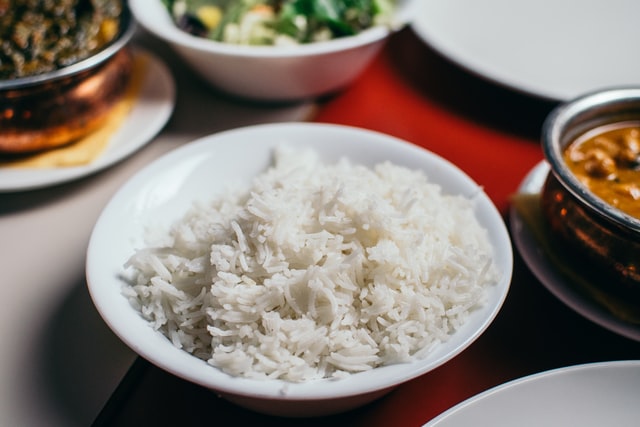Over the years ‘super foods’ continue to roll on through - Kale, Coconut Oil, Goji Berries, MCT oil – the list goes on and on! Some are based on actually science and others - totally hype. Over at Nourish’d we are LOVE science backed superfoods, and the benefits of supercharging our bodies with the best available nutrition. Eat carbs? Don’t eat carbs? We’re here to break it down for you. And it’s pretty simple - for most people, eat the carbs! But what if we told you, it's not about whether to eat them, but HOW you eat them. In this magical world you can have your carbs, and eat them too (see what we did there!?) There’s a lot of talk around the benefits of leaving white complex carbs out of your diet – bread, pasta + rice seemed to have all turned into cauliflower subs. Now don’t get us wrong we are cauliflower keen! But with the benefits of including resistant starch in your diet stacking up by the plate load, the benefits are just too good to resist. Enter - The world of Resistant Starch.
Firstly, what is resistant starch? Oats, rice and potatoes - the most common sources of resistant starch. Let’s break it down - usually as starch digests it breaks down into glucose, which causes blood sugar to spike. Resistant starch travels much further than the small intestine, right down to the colon where it feeds good bacteria allowing for more volume and better fed good bacteria and less of the bad guys. Healthy gut bacteria is just one of the benefits of resistant starch along with increases feeling of fullness, reduced bowel concerns, and reduction in chronic inflammation and disease such as diabetes, obesity, Alzheimer’s and even colon cancers.
Why is it so great? Resistant starch feeds the good bugs in your colon, which in turn produce essential fatty acids that positively impact not just the colon but the whole of your body! The benefits of Including Resistant Starch in your diet:
- Resistant starch passes through the stomach and small intestine all the way to your colon where it feeds your friendly gut bacteria
- Here it feeds all the great bacteria in your colon, having a big impact on not only their health but their number
Did you know? Once the resistant starch lands in your colon your bacteria feed on it. During this process they produce short chain fatty acids like butyrate.
This is where the magic happens!! Butyrate is the preferred fuel of the cells that line your colon. Not only is butyrate the preferred source of fuel for the bacteria in your colon, in general resistant starch is beneficial to the whole of your body. The list of benefits go on for a mile, but include
- The short chain fatty acids that aren’t used by your colon travel to other areas of the body helping to reduce inflammation.
- It reduces your pH (or acidity) level, and leads to changes within your colon that could lower your risk of colorectal cancer (the fourth most common cause of cancer death in the world - yikes!)
- Resistant starch is also known to ease (for many) various digestive disorders due to its therapeutic impact on the colon. These disorders are rife within society today and include Crohns disease, Ulcerative colitis, diverticulitis and more commonly, constipation and diarrhoea.
- Resistant starch positively impacts your insulin sensitivity after meals - in short it helps to keep your blood sugar stable
- Reducing insulin sensitivity is imperative to health in general, it is believed to be a major precursor to disease such as Diabetes, Alzheimer’s, obesity and heart disease
- Resistant starch also contains fewer calories that regular starch (two vs four calories per gram)
- As resistant starch is a fibre, it can help with satiety and reduce the desire to keep eating when you might not need to.
I know you’re thinking ‘this sounds awesome – and it happens from eating carbs!?’ Yes and yes! Let's talk about how you can get resistant starch into your diet and start accessing all of these health benefits. Really it comes down to the cooking and cooling process of foods. Specifically, heating starch containing foods damages their content and reduces their starch content. The way to increase this content is to let them cool after cooking. Foods high in resistant starch include:
- Cooked and cooled rice
- Cooked and cooled potatoes
- Beans, legumes + nuts
- Cooked and cooled oats
To summarise all the technical stuff up there - including resistant starch as part of your beautifully balanced diet can improve overall health by feeding good bacteria in your gut, reducing inflammation and assisting with digestive concerns. Long term it can help with weight management and reduce your insulin sensitivity. So if cauli rice isn’t your bag at every meal (or any meal), it turns out there’s a whole lot of very good reasons that the switch might just be ok!
References:
https://www.healthline.com/nutrition/resistant-starch-101#digestive-system https://pubmed.ncbi.nlm.nih.gov/8695601/ https://pubmed.ncbi.nlm.nih.gov/21531334/ https://www.ncbi.nlm.nih.gov/pmc/articles/PMC5320660/ https://www.healthline.com/nutrition/improve-insulin-sensitivity#TOC_TITLE_HDR_10



